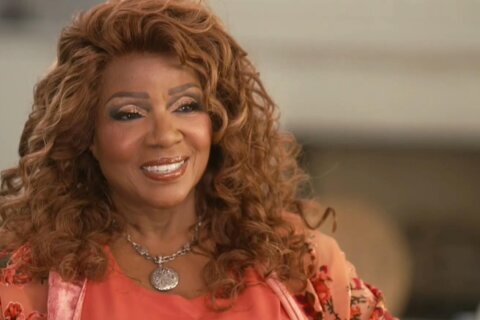WASHINGTON — Munching popcorn is much more fun with your tongue planted firmly in cheek.
So in that spirit we cry: “what a year at the movies!”
Over the weekend, while waiting for our feature presentation of “Terminator 5,” we were treated to trailers for “Rocky 7,” “Star Wars 7,” “Paranormal Activity 6” and “Mission Impossible 5.”
They came with cutesy subtitles — “Rogue Nation,” “Ghost Dimension,” “Genisys” — specifically designed to disguise their ridiculously high sequel counts.
Ironically, two of the year’s best blockbusters were fourth installments, “Mad Max 4” and “Jurassic Park 4,” which outclassed “Furious 7” and “Avengers 11,” which were a step up from “Taken 3,” “Insidious 3,” “Ted 2,” “Magic Mike 2,” “Pitch Perfect 2,” “Divergent 2,” “Woman in Black 2,” “Hot Tub Time Machine 2” and “Paul Blart: Mall Cop 2.”
Yes, even Paul Blart got a freakin’ sequel. “I know it was you, Blart. You broke my heart.”
Did you catch the “Poltergeist” remake? Neither did I. I was too busy tweeting about “Top Gun 2.”
Are you excited for “Hunger Games” this fall? I can’t wait to see how “Part 3: Part 2” ends.
At least we can take refuge in low-budget indies like “The Second Best Exotic Marigold Hotel.”
It all speaks to a sequel culture where rebooting a known brand is deemed safer by Hollywood studios than rolling the dice on an original concept. It may be financially safer, but it’s a cynical, cowardly approach where the “devil we know” is better than the visionary filmmaker we don’t.
And therein lie the rub — all major moviemakers were once hungry climbers. To deny their entry into the business is for the industry to eat its young. What if George Lucas was never allowed to make “Star Wars” (1977), Ridley Scott “Alien” (1979) or James Cameron “The Terminator” (1984) — all because studios were too nervous to take a chance on their brainchild sci-fi concepts?
It’s creative suicide to keep going like we’re going. Yes, there are always exceptions. Sequels like “The Godfather Part II” (1974), “The Silence of the Lambs” (1991) and “Lord of the Rings: Return of the King” (2003) all won Best Picture, while some of our most cherished classics were indeed remakes — “The Wizard of Oz” (1939), “The Maltese Falcon” (1941), “The Fly” (1986), “The Departed” (2006).
But over time, we’ve come to a place where our biggest blockbusters no longer compete for awards, a cancerous splintering between the artistic and the mainstream that is culturally dangerous.
During the Golden Age of Hollywood (1930s-1950s) a top-ten grosser went on to win Best Picture 87 percent of the time, with viewers flocking to see “Gone With the Wind” (1939), “Casablanca” (1942) or “Bridge on the River Kwai” (1957). During the Hollywood Renaissance (1960s-1970s), 90 percent of Best Picture winners were top-ten grossers, from “Lawrence of Arabia” (1962) to “The Godfather” (1972). But by the sequel-heavy 1980s and 1990s, that figure fell to 55 percent.
How many top-ten grossers have won Best Picture over the past decade?
Zero.
In fact, top-ten grossers are now lucky just to be nominated — let alone win. Last year, “American Sniper” was the only top-ten grosser nominated, while the eventual winner, “Birdman,” finished No. 78 on the box office charts. The previous year’s winner, “Twelve Years a Slave,” was No. 62 at the box office, “Argo” was No. 22, “The Artist” was No. 71, “The King’s Speech” was No. 18, and “The Hurt Locker” was No. 116, grossing $733 million less than that year’s top grosser “Avatar” (2009).
Why the divide? Are audiences getting lazier? Or are voters becoming more elite?
Shreds of both may be true, but I personally think that’s a false choice. Audiences are often way smarter than they’re given credit, while awards voters are obligated to reward quality over quantity. The sad truth is that great movies are still being made, but fewer folks are going to see them.
So here we are in 2015, a once futuristic time where “Back to the Future 2” predicted a runaway sequel culture of 3D sharks devouring us from the marquee of “Jaws 19.” At the time, it seemed like humorous hyperbole. Now, Robert Zemeckis looks like Nostradamus.
It’s time we admit it. As a movie culture, we are sick. We have separation anxiety from our superheroes. We relapse into our avenger addictions. And it’s not healthy for us in the long run.
Let us adopt a familiar creed: May the movie gods grant us the serenity to accept the things we cannot change (this sequel genie is way out the bottle), the courage to change the things we can (instead of one $170 million “Terminator” sequel, let’s fund 57 original flicks at $3 million apiece) and the wisdom to know the difference (see our gallery of the sequels that got it right).
After all, admitting we have a problem is the first step to recovery. So as we gorge ourselves on popcorn butter this summer, let’s raise our overpriced sodas for a toast to “Ex Machina,” “Inside Out,” “Love & Mercy” and “Me and Earl and the Dying Girl” — true-blue originals in a sea of Xerox.
The future of film depends on it.
Follow WTOP Film Critic Jason Fraley @JFrayWTOP.








